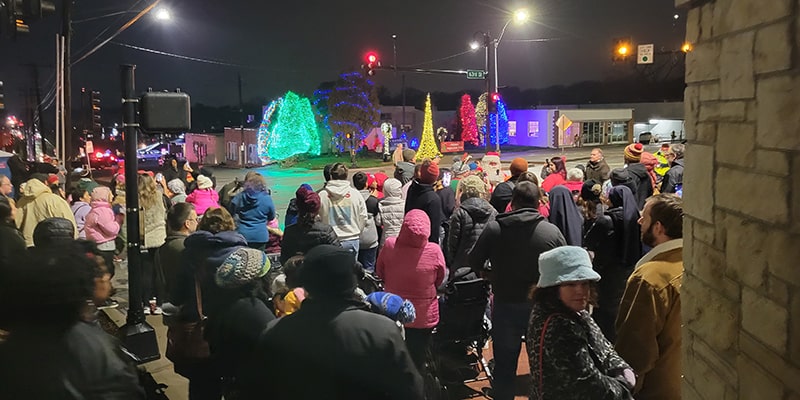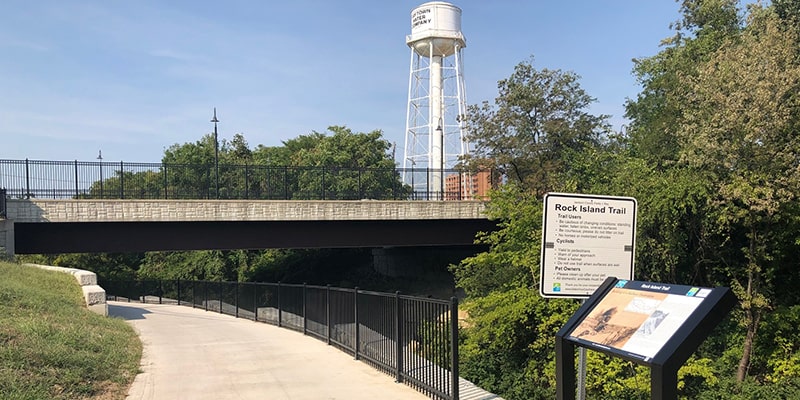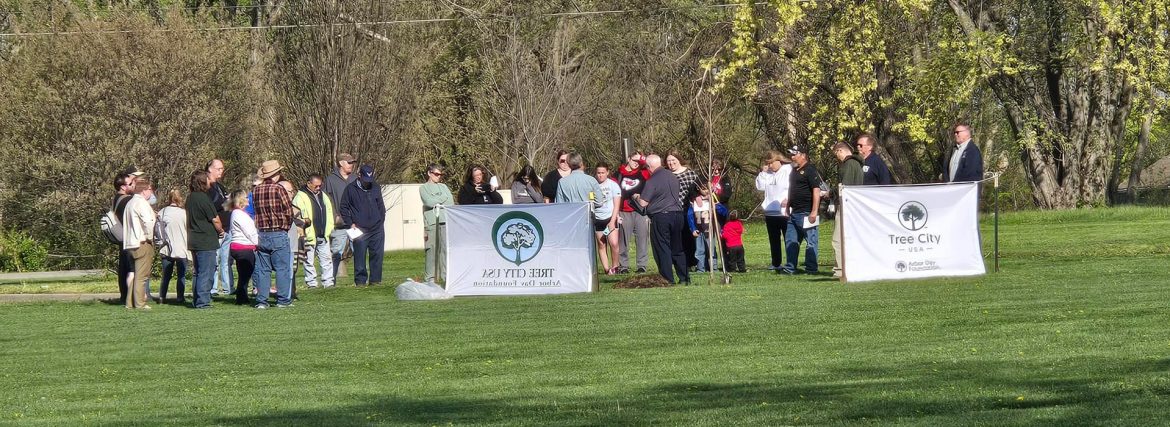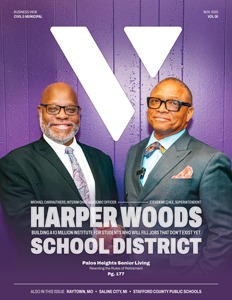A Dynamic Town Growing with Purpose
Heart, Heritage, and a Clear Plan Forward
At first glance, Raytown feels like a classic Midwestern small town—10 square miles with neighbors who know your name and parks that fill with families on summer nights. Look closer, and you’ll find a city positioning itself for its next chapter: revitalizing downtown, scaling public safety innovations, restoring historic trails, and preparing to welcome new business investment—all while protecting the community feel that drew people here in the first place.
“We’re centrally located, close to everything in the Kansas City metro—and close to each other,” says Mayor Michael McDonough. “This community has one of the biggest hearts around.”
Why Raytown, Why Now
Raytown’s appeal starts with location and affordability. Minutes from the Truman Sports Complex—and an easy hop to either side of the state line—the city offers access to regional amenities without the price tags of larger suburbs. It’s also rich in history.
The Oregon, Santa Fe, and California Trails cross here; the Rice–Tremonti Home, the oldest standing frame house in Jackson County, still anchors a living story of westward expansion. That heritage now intersects with a modern greenway network: the Rock Island Trail runs straight through downtown, a spine for walkability and small-business life.
The city also leans into its eclectic local scene. Downtown Raytown blends the familiar (barbershops, bakeries, a used bookstore) with personality-loaded destinations like the Irish Pub, the Naughty Pine, and Gnarly Hussle’s vintage and memorabilia trove. It feels walkable, neighborly, and a little unexpected—in the best way.
That vibe comes to life at the Raytown Live summer concert series, launched seven years ago by a handful of citizens, Parks & Recreation Director Dave Turner, and the mayor. Funded by sponsors rather than tax dollars, the second-Saturday shows now draw 200–350 people for a distinctly family-friendly evening
The city cohosts the Mayor’s Tree Lighting with its valued partner, the Raytown Main Street Association which is also getting a glow-up this year: an all-afternoon Saturday street event downtown with choirs, vendors, food trucks—and a new 18-foot tree for the big moment with Santa. With Kansas City hosting matches during the 2026 FIFA World Cup, Raytown expects foot traffic to surge; planning started years ago to make sure those visitors find reasons to linger.
Downtown Revitalization with a Plan
Economic development is moving with intention. City Administrator Diane Egger points to a Urban Land Institute Technical Assistance Panel (ULI TAP) focused on downtown Raytown. The panel’s walk-through produced a pragmatic playbook: lean into the Rock Island Trail as an anchor, activate green spaces with pop-up and market concepts, and remove regulatory friction that slows adaptive reuse of older buildings.

“We’re assessing incentives case by case,” Egger says.
“Everything’s on the table—zoning updates, expedited permitting, and targeted tools—to help the right projects move faster,” she adds.
That urgency is backed by capital. The city is deploying $7.2 million in GO bond projects, with the first slated downtown to upgrade core infrastructure and streetscapes that signal “we’re open for business.”
An unexpected near-term lift: a new animal shelter in the downtown footprint—the city’s first—arriving as many regional shelters struggle or consolidate. The shelter’s design will complement nearby green space and add steady, positive foot traffic to the core. “It’s good for animals and good for business,” Egger notes.
Beyond downtown, the city is preparing to rezone a segment along Raytown Road to attract light industrial users. With proximity to I-70 and the stadium that corridor is primed for small and mid-sized employers who need quick access without heavy-industrial intensity. It’s a complementary growth lane that broadens Raytown’s tax base while preserving neighborhood character.
In order to facilitate all that is happening on the business side, the city works very closely with the Raytown Chamber of Commerce to help attract businesses to the city as well as help to support local, preexisting businesses to flourish.
Public Safety: Recruitment Wins and a Smarter Response
Chief of Police Bob Kuehl frames public safety progress in terms of people, partnerships, and outcomes. After a national drought in police applicants, Raytown engineered a local hiring turnaround—boosting staffing by 35% in 18 months while maintaining high standards. That surge enabled the department to revive its K-9 unit, expand proactive enforcement, and improve response times across a compact 10-square-mile service area.

The department also secured certification as a Blue Shield Community, a state-level designation that recognizes concrete action to reduce violent crime, improve recruiting and retention, and strengthen collaboration with city leadership—opening avenues for grant support.
But the most transformative shift may be in how Raytown answers calls tied to mental health.
Through Rediscover’s Co-Responder Program, two full-time mental health specialists are embedded with the department and ride alongside officers. The results are striking: in the past year, the co-responders joined officers on 833 calls and resolved 86% on scene—without a trip to jail or the hospital. The team has the time and training to stabilize crises, connect people to services, and conduct follow-ups—freeing officers to respond to 911-driven work while improving outcomes for residents. “It’s amazing what happens when the right expertise arrives at the right moment,” Kuehl says.
With staffing stabilized, measurable gains followed: compared to the same period last year, overall crime is down 21%, traffic stops are up 132%, and citations are up 106%—reflecting a targeted response to the region-wide surge in dangerous driving. Looking ahead, Kuehl plans to keep shifting from reactive to proactive policing—expanding traffic enforcement, building the K-9 team, and deploying data from one of the region’s most credentialed crime analysts to direct resources where they can do the most good.
Community outreach isn’t a silo in Raytown; it’s a stance. “Every officer is part of our outreach program,” Kuehl says. “Every call and every coffee stop is a chance to build trust.”
Parks & Recreation: Quality of Life as Strategy
Raytown maintains 174 acres of parkland with a lean crew of nine full-time staff—stretching dollars and sweat to keep community life vibrant. Recent signature projects include the Terry Copeland Park transformation at 53rd & Raytown Road: a million-dollar LWCF grant funded demolition and redevelopment, including a new dog park, as well as $2M in federal funding for the project, with Phase 2 now queued for a shelter house, splash pad, playground, and restroom facility.
Another $1 million investment at Kenagy Park will replace restrooms, update the skate park, and upgrade ADA access on trails and playgrounds.
Turner’s approach is to create niche amenities that deliver maximum impact and community appeal. The city’s BMX track has hosted multiple national events and is one of only two of its kind in the metro. Partnerships broaden reach: a recent “Get Outdoors Day” with the Missouri Department of Conservation drew 3,500–4,000 people from across greater Kansas City.
Trails remain both heritage and future. The National Park Service’s push to interpret and restore the Santa Fe Trail—which crosses the Rock Island Trail in downtown—will help Raytown tell its unique story through signage, programming, and tourism. “It’s a no-brainer to connect our history to our present,” Turner says. “The trails literally meet in the heart of our city.”
The community has responded in kind. A recent parks sales tax passed by 73%, giving the department long-term confidence to plan and deliver. “For a city our size, that’s a mandate,” Turner says. “People see the value.”
The Next 18–24 Months
Mayor McDonough is clear-eyed about priorities: keep growing public safety capacity and convert momentum into economic development that expands the tax base without sacrificing character. Older buildings are an asset, not a burden—perfect canvases for restaurants, pubs, specialty retail, and creative services. With fast-track permitting, targeted incentives, and GO bond projects queued, the city aims to make it easier to invest, adapt, and open doors downtown.
“We’re moving from good to great,” the mayor says. “For a long time we’ve said we want to be a destination. Now we’re doing the things that make that real.”
As the concerts tune up, the trails link past to present, and patrol cars share calls with embedded clinicians, Raytown’s formula is becoming visible block by block: honor what makes the town itself, remove friction where it slows good ideas, and invite people—residents and visitors alike—to spend more of their lives here. In Raytown’s words, and in its actions, the message is the same: on the rise.
AT A GLANCE
Who: Raytown, Missouri
What: A small but fast growing community focused on providing the top tier amenities
Where: Just outside Kansas City, Missouri
Website: www.raytown.mo.us & www.visitraytown.com
PREFERRED VENDORS/PARTNERS
GBA: www.gbateam.com
GBA provides innovative architectural, engineering and construction services nationwide across federal, industrial, life sciences, mission critical, municipal, site development, transportation and water environment markets. With over 500 employees, GBA’s multidisciplinary team delivers on its core purpose: “Creating Remarkable Solutions for a Higher Quality of Life.”
Raytown Area Chamber of Commerce &
Tourism: www.raytownchamber.com
I am text block. Click edit button to change this text. Lorem ipsum dolor sit amet, consectetur adipiscing elit. Ut elit tellus, luctus nec ullamcorper mattis, pulvinar dapibus leo.



